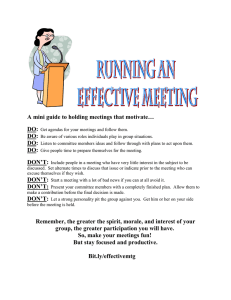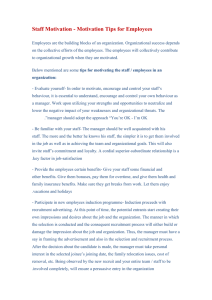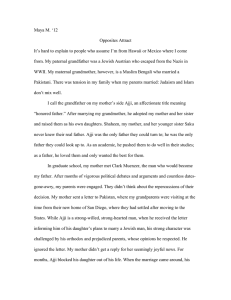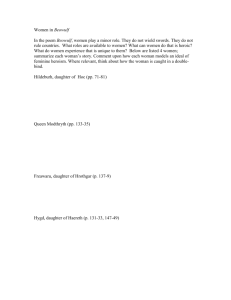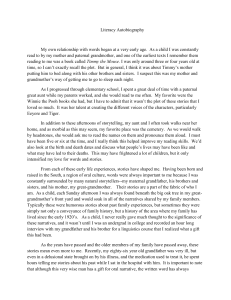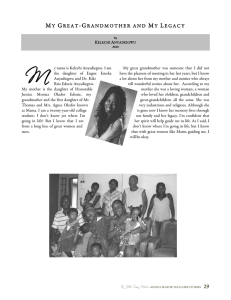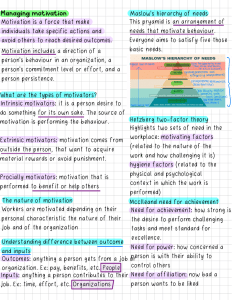Functions of Families
advertisement
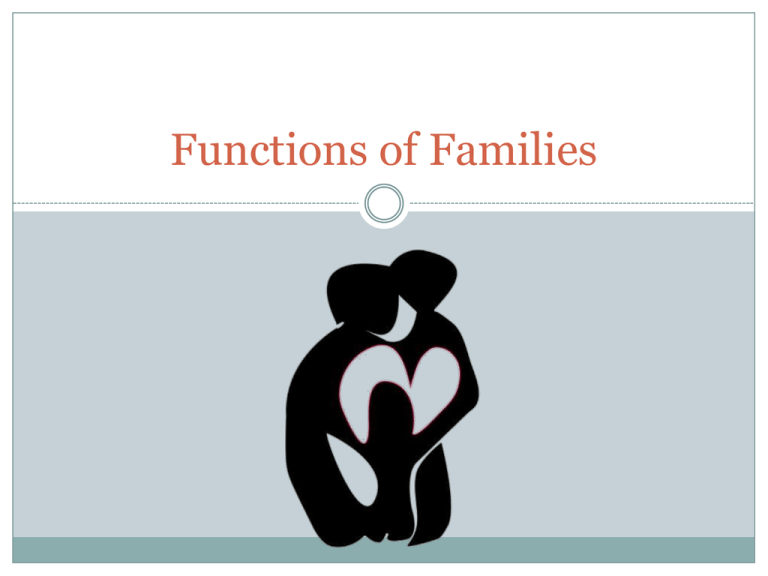
Functions of Families Why we study family… To understand how families organize (types of families) Understand family behaviour(s): traditions, beliefs, roles, responsibilities, etc. Motivations: why we carry out these roles. Boys vs. Girls Snips and snails and puppy-dog tails vs. sugar and spice and all things nice. What message does this send to children? The following is a slide show that was prepared as a way to teach EAL (English as an additional language) students how to identify the English words for family members… SEE IF YOU CAN SPOT SOME PROBLEMS WITH THIS INTERPRETATION… Family Mother Father Daughter Son Brothers Sisters Brother and Sister Mother and Father Grandmother Grandfather Grandfather and grandmother Father and Daughter Mother and son Mother and Daughter Father and Son Universal Function of the Family Shirley Zimmerman (U of Minnesota) 6 Key Functions 1. Addition of New Members 2. Physical Care 3. Socialization 4. Regulate Behaviour 5. Maintain Morale & Motivate 6. Economics 1. Addition of new members Births Marriage WHY? Cycle of dependency: have children to look after you when you are older 2. Physical Care Society is not always organized to support people as a family can. 3. Socialization Teach children skills, knowledge, values, attitudes of larger society. Foster ability of children to appropriately function in society according to their roles in adulthood. 4. Regulating Behaviour Maintain order in family society as a way to motivate order in the larger society. 5. Maintain Morale & Motivate Sense of duty / economic necessity Affective nurturance: LOVE…meeting emotional needs in foundation of our commitment > contributes to the health of society. 6. Economics Producing & Consuming Earn income to purchase goods for the family. NEEDS WANTS Why do Humans NEED Families? Helpless at birth 1st families were reliant on each other for survival: made unions based on: 1. 2. Reproduction Hunting vs. gathering Agricultural Families Created a sustainable and abundance food supply. Formed enduring couples so men (fathers) would help look after the children. Farms required a lot of labour. Land = wealth and needed to be worked and protected…resulted in larger families (i.e. more children). Agricultural Families MEN: Worked and protected the land. WOMEN: Domestic chores > rearing children, household chores. Urban Industrial Families Changes in roles: Men, women, and children worked outside the home in factories. Emergence of the Industrial Nuclear Family: Motherhood became the sacred and primary role of women. Women nurtured and stayed home. They were supported by their husbands. Men: money earners for their wives and children. Children: Compulsory education enacted in 1871 in Ontario. Child labour laws passed in the 1880’s to protect children. Modern Nuclear Family Emerges at the beginning of the 20th century. Delayed marriage until purchase of own home. Children supported by their parents until the finished school…parents therefore could not afford large families. Husband: provider Wife: Homemaker Children: play under supervision of mother & attend school. The Modern Consumer Family Read the article and answer questions 1-3 at the end of page 19.
